No waiting list: You can start with an intake and treatment immediately
Therapy provides a deeper level of support for employees dealing with anxiety, depression, or trauma. It helps them work through complex emotional challenges, fostering long-term mental health and well-being.
Therapy ensures employees are mentally healthy, engaged, and able to contribute effectively to the workplace.
For which conditions can clients apply?
Anxiety, panic, and other anxiety disorders
Attention deficit and behavior (ADHD)
Autism and pervasive disorders
Somatoform disorders
Mental disorders due to a medical condition
Depression, bipolar, and other mood disorders
Trauma, PTSD, and dissociative disorders
Personality disorders
Sleep disorders
Alcohol and other substance-related disorders
The following diagnoses we do not treat:
If during the intake it becomes clear that the issues or question for help fall outside my scope of care within Generalist Basic Mental Health Care (GB-GGZ), I will refer clients to an appropriate healthcare provider or back to the referring professional. This may be the case for:
- Psychotic disorders
- Neurocognitive disorders
- Severe eating disorders
- Severe addiction problems
- Requests for extensive diagnostics, for example, for AD(H)D / ASD.
Are you unsure whether our services are the right fit for you? Feel free to contact us for consultation.
Therapies that I provide
Click on any of the tabs from the list below to learn more about each Therapy and see which one resonates with you.
Therapy
Cognitive Behavioural Therapy
Acceptance & Commitment
EMDR
Schema Focused
Therapy
Inter Personal
Therapy
Client-centered Psychotherapy
System
Therapy
What is Therapy?
Psychotherapy is an overlapping term referring to treating mental health problems, usually done by talking with a professional mental health provider.
During therapy, you learn about your condition, coping, and yourself with the aim of relieving a (set of) complaint(s). It helps you learn to take control of your life and use healthy coping skills to respond to challenging situations. In some cases, the therapeutic goal is not to reduce symptoms but to decrease their negative effects on the individual’s well-being and functioning.
It is helpful to construct a holistic theory to gain better insight into what causes complaints. As the name implies, a holistic theory is a hypothetical model that looks at you, your history, and your environment/situation as a whole It visualizes the factors that may relate to current complaints and their causational relations. These factors can include, e.g., biological factors, (traumatic) past events, upbringing style, personality, coping, and situational risks and protectors.
An important aspect of almost all therapies is psychoeducation, which helps you understand how certain conditions develop and what their function is. In most cases, Mental -dis-order arises when dysfunctional behavioural patterns are not recognized as maladaptive, and are or were functional for certain specific situations or periods.
There are many types of psychotherapy, each with its own approach and proposed mechanism of action. The type of psychotherapy that’s right for you depends on your situation and personal preference.
Click on any of the other therapies for a description and see which one resonates with you!
Cognitive Behavioural Therapy (CBT)
What is Cognitive Behavioral Therapy?
Cognitive behavioral therapy (CBT) is a form of psychological treatment that has been demonstrated to be effective for a range of problems, including depression, anxiety disorders, alcohol and drug use problems, marital problems, eating disorders, and severe mental illness. Numerous research studies suggest that CBT leads to significant improvement in functioning and quality of life. In many studies, CBT has been demonstrated to be as effective as, or more effective than, other forms of psychological therapy or psychiatric medications.
It is important to emphasize that advances in CBT have been made based on both research and clinical practice. Indeed, CBT is an approach for which there is ample scientific evidence that the methods that have been developed actually produce change. In this manner, CBT differs from many other forms of psychological treatment.
CBT is based on several core principles, including:
- Psychological problems are based, in part, on faulty or unhelpful ways of thinking.
- Psychological problems are based, in part, on learned patterns of unhelpful behavior.
- People suffering from psychological problems can learn better ways of coping with them, thereby relieving their symptoms and becoming more effective in their lives.
CBT treatment usually involves efforts to change thinking patterns. These strategies might include:
- It is vital to recognize one’s distortions in thinking that are creating problems and then to reevaluate them in light of reality.
- Gaining a better understanding of the behavior and motivation of others.
- Using problem-solving skills to cope with difficult situations.
- Learning to develop a greater sense of confidence in one’s abilities.
CBT treatment also usually involves efforts to change behavioral patterns. These strategies might include:
- Facing one’s fears instead of avoiding them.
- Using role-playing to prepare for potentially problematic interactions with others.
- Learning to calm one’s mind and relax one’s body.
Not all CBTs will use all of these strategies. Rather, the psychologist and patient/client work together in a collaborative fashion to develop an understanding of the problem and a treatment strategy.
CBT emphasizes helping individuals learn to be their own therapists. Through exercises in the session and “homework” exercises outside of sessions, patients/clients are helped to develop coping skills, which allow them to change their own thinking, problematic emotions, and behavior.
CBT therapists emphasize what is going on in a person’s current life rather than what has led up to their difficulties. While a certain amount of information about one’s history is needed, the focus is primarily on moving forward in time to develop more effective ways of coping with life.
https://www.apa.org/ptsd-guideline/patients-and-families/cognitive-behavioral
Acceptance and Commitment Therapy (ACT)
What is ACT?
ACT stands for ‘Acceptance and Commitment Therapy’. This third-generation behavioral therapy helps clients flexibly deal with the obstacles they find (acceptance) so that they can continue to invest in the things they care about (commitment). ACT consists of six different processes/skills, often depicted in the ACT hexaflex:
- Acceptance: Making room for experiences.
- Defusion: Distance yourself from your thoughts.
- The Self: Flexible handling of your self (image).
- Here and Now: Attention to the Here and Now.
- Values: Dwell on what really matters to you.
- Committed Trading: Investing in your values.
These ACT skills work together to make a person more psychologically flexible. The goal of ACT is not very much to develop personal resilience. ACT makes extensive use of metaphors and exercises, so the various ACT skills are developed experientially.
Does ACT work?
ACT is recognized as an evidence-based therapy for major depressive disorder, various anxiety disorders, obsessive-compulsive disorder, psychosis, and chronic pain (APA, 2010). ACT has also been shown to be effective in increasing a client’s general well-being; there is no psychopathology to benefit from this form of therapy.
Eye Movement Desensitisation and Reprocessing Therapy (EMDR)
What is EMDR?
Eye Movement Desensitization and Reprocessing, abbreviated to EMDR, is a therapy for people who continue to suffer from the consequences of a shocking experience, such as an accident, sexual violence or a violent incident. EMDR was first described more than 25 years ago by the American psychologist Francine Shapiro. In the following years, this procedure was further elaborated and developed into a fully-fledged and effective therapeutic method.
When EMDR?
What happens to you after a shocking, painful or frightening event? You can process the event, or you can get stuck in this process.
Getting stuck in processing makes you feel, behave, think, and react differently to your environment. You often notice that you are not feeling well, or your environment indicates this. You may not realize that your changes in yourself are due to the unprocessed shocking event. It may be that the shocking event causes you to constantly have fearful images or thoughts about it, as a result of which you suffer from various complaints. EMDR is then a first-choice treatment to help you eliminate these complaints.
The therapist will ask to think back to the event, including the associated images, thoughts, and feelings. First, this is done to collect more information about the traumatic experience. Then, the processing process is started. The therapist will ask to recall the event. But now, this happens in combination with a distracting stimulus. In traditional cases, this is the hand of the therapist or by the sound that is presented alternately left and right by means of headphones. We work with sets of digital distraction tasks that have been proven to be more effective than traditional methods.
After each set, the therapist asks the client what comes to mind. The EMDR procedure usually triggers a stream of thoughts and images, but sometimes also feelings and physical sensations. Often, things change. After each set, the client is asked to focus on the most noticeable change, followed by a new set.
What are the expected effects?
The sets will gradually lead to the memory losing its power and emotional charge. So it becomes easier and easier to remember the original event. In many cases, the memory images themselves also change and become blurrier or smaller, for example. However, it may also be that less unpleasant aspects of the same situation emerge. Another possibility is that new thoughts or insights arise spontaneously that give the event a different, less threatening meaning. These effects contribute to the shocking experience of increasingly having a place in the person’s life history.
Schema Focused Therapy (SFT)
What is Schema Focused Therapy?
Schema therapy is a nationally and internationally scientifically proven form of psychotherapy for people with personality problems or other long-term complaints, such as recurrent depression. Schema therapy helps you understand and change the origin of persistent patterns.
During the treatment, the influence of experiences from your childhood on your thinking and acting is examined. You learn to recognize your patterns and to change them in such a way that you start to think differently, feel better, and do things differently. You learn to feel what your needs are, and you learn to deal with them in a healthier way. This will help you better direct your life and improve your relationships with others. You can receive schema therapy in different forms: individually, in a group or a combination of both.
When Schema Focused Therapy?
Schema Focused Therapy is used, among other things, for personality disorders such as borderline personality disorder. Schema therapy may also be suitable for the treatment of anxiety disorders, relationship problems, eating disorders, or depression. Particularly when that complaint has subsided, the personality theme that may underlie or be related to it becomes more apparent, so schema therapy as a follow-up or after-treatment becomes appropriate.
Schema therapy can also be used for less serious problems. Schema therapy helps to recognize persistent patterns that arose in your childhood. When you don’t recognize and change these patterns, you keep running into the same problems.
Inter Personal Therapy (IPT)
What is Interpersonal Psychotherapy (IPT)?
IPT is a form of psychotherapy that focuses on relieving symptoms by improving interpersonal functioning. It addresses current problems and relationships rather than childhood or developmental issues. Therapists are active, non-neutral, supportive, and hopeful, and they offer options for change.
IPT:
- is structured
- is time-limited (active phase is usually 12–16 weeks)
- focuses on interpersonal relationships and communication
- focuses on here-and-now relationships
- aims to improve interpersonal functioning and social support.
- IPT is delivered in one-to-one and group formats.
- How does Interpersonal Psychotherapy (IPT) work?
- A central idea in IPT is that psychological symptoms can be understood as a response to current difficulties in everyday relationships with other people.
IPT focuses on four areas:
- conflict in relationships as a source of tension and distress. Life changes, such as job loss or the birth of a child, that affect people’s feelings about themselves and others
- grief and loss
- difficulties in starting or sustaining relationships
- When people learn effective strategies for dealing with their relationship problems, their symptoms often improve.
When Interpersonal Psychotherapy (IPT)?
IPT is most often used during the acute phase of major depression, but it can also be provided as a maintenance treatment to help prevent relapse and recurrence of illness.
It’s also used to treat:
- anxiety
- bulimia nervosa
- chronic fatigue
- mood disorders such as bipolar and dysthymic disorders.
IPT has been adapted to treat patients from adolescence to old age. It is effective as a stand-alone treatment and in combination with medication.
https://www.camh.ca/en/health-info/mental-illness-and-addiction-index/interpersonal-psychotherapy
Client-centered Psychotherapy
What is client-centered psychotherapy?
Client-centered therapy is a form of psychotherapy developed by Carl Rogers in the early 1940s. According to Rogers, an orderly process of client self-discovery and actualization occurs in response to the therapist’s consistent empathic understanding of, acceptance of, and respect for the client’s frame.
The therapist sets the stage for personality growth by reflecting on and clarifying the client’s ideas. The client is able to see himself or herself more clearly and come into closer touch with his or her real self.
As therapy progresses, the client resolves conflicts, reorganizes values and approaches to life, and learns how to interpret his or her thoughts and feelings, consequently changing behavior that he or she considers problematic.
It was originally known as nondirective counseling or non-directive therapy, although this term is now used more broadly to denote any approach to psychotherapy in which the therapist establishes an encouraging atmosphere but avoids giving advice, offering interpretations, or engaging in other actions to direct the therapeutic process actively. It is also called client-centered psychotherapy, person-centered therapy, or Rogerian therapy.
https://dictionary.apa.org/client-centered-therapy
System Therapy
What is systems therapy?
System therapy is a form of psychotherapy, also known as relationship and family therapy. Its corefeature is that important relatives such as the partner, children, brother, sister, parents, neighbors, friends, and colleagues are involved in the therapy. Much attention is paid to mutual interaction patterns and their improvement during therapy. Coming absentees are also taken into account.
The basic principle is that a problem of a (psychological) complaint never stands alone. The social, relational, and cultural context always plays a role. The living situation and relationships – together with the system – influence problems. During the therapy, it is discussed what influence environmental factors such as work, school, neighborhood, religion, and culture have on the problem and on everyone involved.
What can system therapy mean for me?
By paying attention to and influencing multiple individuals within the system and their mutual patterns, you get to the core of the problem faster. Conversations with a system therapist create more understanding between you and your loved ones. Because of the better of relatives in the therapy, recovery is faster. Understanding and supporting each other better reduces the risk of the problem getting worse again.
System therapy is widely applicable, for example, to relationship and family problems, psychological problems and complaints, domestic violence, and physical problems. Preventing major additions to therapy at an early stage can prevent problems from getting bigger. For example, a family that is out of balance due to problems of the parents of those close to them also develops (psychological) complaints.
In therapy, people become aware of how they react to each other and gain insight into their influence on each other. We work from work to a solution.














